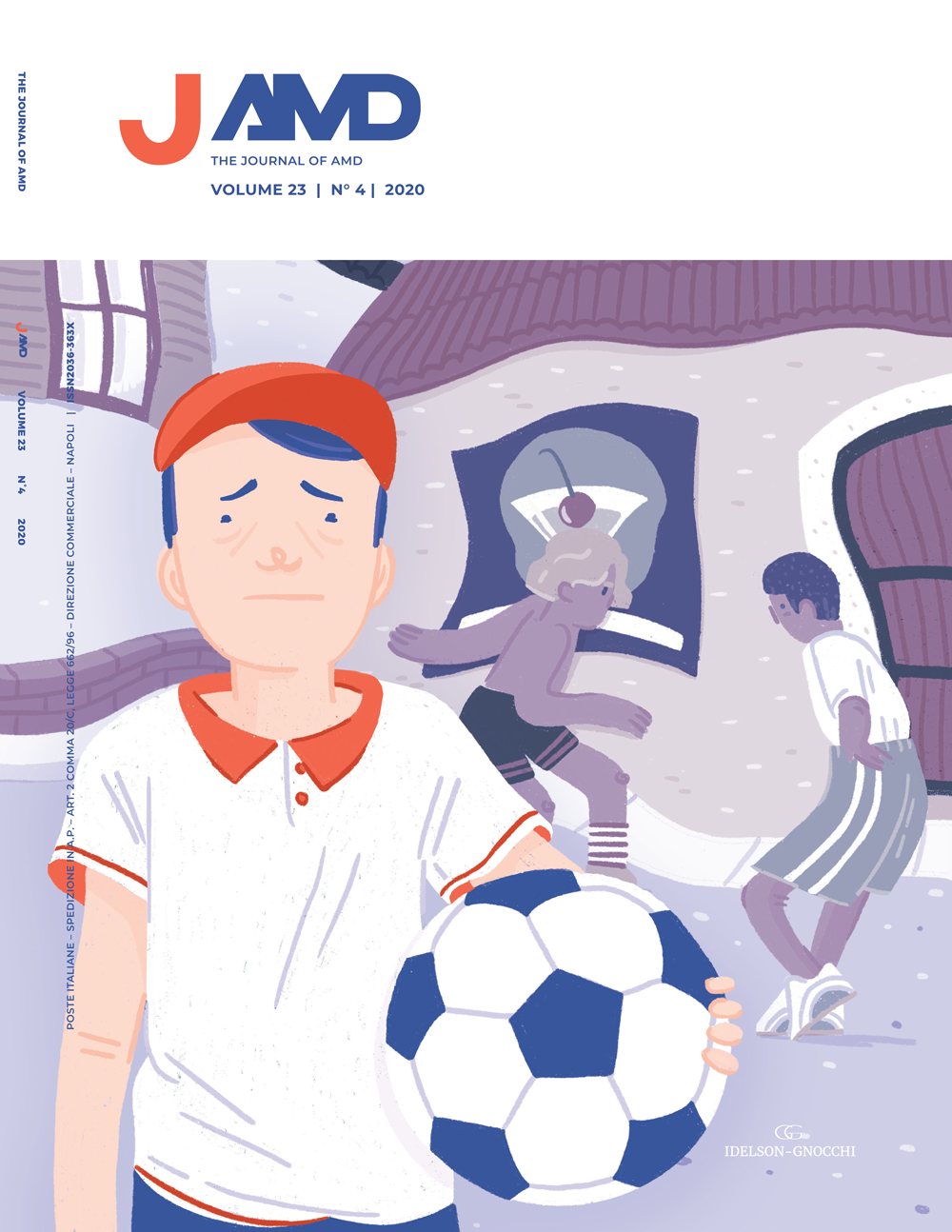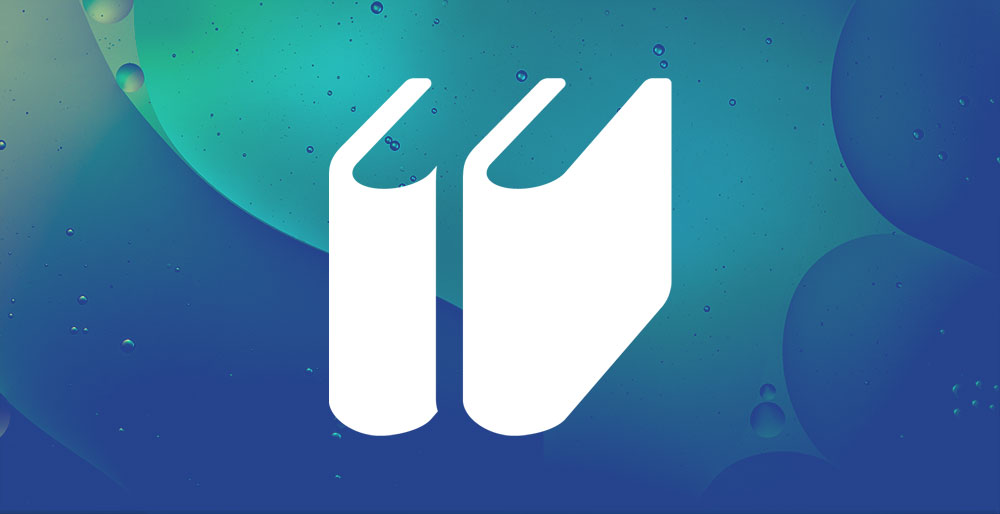Original articles
Narrative Medicine in the treatment of diabetes
JAMD 2020;23(4):254-257
Medicine practiced with narrative competence, called Narrative Medicine, is the ability to acknowledge, absorb, interpret and act on the stories and plights of others and represents a model for humane and effective medical practice.
In this perspective, the person’s experience and story become important tools that allow health professional to better understand their patients’ disease and to formulate more appropriate diagnostic and treatment options.
Furthermore, the narrating of the patient’s story is a therapeutically central act, because to find the words to contain the disorder and its attendant worries and to develop self-awareness and motivation to self-care.
KEYWORDS narrative medicine; therapeutic patient education; storytelling; training for healthcare professionals; personalized medicine.
Assistance for people with diabetes mellitus during the COVID-19 pandemic. The experience of the TO3 Local Health Care Service in Piedmont
JAMD 2020;23(4):263-274
People with diabetes with coronavirus infection have a high likelihood of progression to severe COVID-19. The pandemic has upset our health model; the booking suspension limited access to emergencies, made it difficult to guarantee medical services, with different access priorities, to assist chronic patients, such as diabetics, for whom discontinuity of care could become a risk for and in case of infection.
In ASLTO3 we have developed an emergency procedure, in compliance with the lockdown provisions to limit the presence in the clinic, for the provision of services, in presence or at a distance, to people with diabetes blocked at home, or in isolation, hospitalized or quarantined, or to be hospitalized. We have developed a strategy based on the diabetes care pathway PDTA, standard of care in Piedmont, to stratify the risk of loss of access to services and to prepare organizational measures to select, case by case, the relative and deferred urgent requests, direct on the right location for the right answer giving priority to those who still did not know or already knew they had diabetes, even positive for COVID-19, and needed treatment, and uses dedicated telephone lines and e-mails, for a virtual clinic.
During the first peak of the pandemic, we assisted over 4000 people with diabetes by providing 7598 services, 244 for endocrinology, 7199 for diabetes, 155 consultations, 431 face-to-face and over 5,000 remotes.
Studies produced during the COVID-19 emergency have confirmed that the active resilience of the diabetes care service can help improve patient outcomes and system stability.
Experience in the implementation of technologies, such as diabetes PDTA, adapted to the emergency, can help to triage both persons, activities, prevention and assistance, and telemedicine projects to minimize the risk in future events.
KEYWORDS pandemic COVID-19; diabetes care pathway; medical services; triage patient; telemedicine.
Simposio
Educating patients on carbohydrate counting: efficiency of distance support in type 1 diabetes
JAMD 2020;23(4):275-280
Due to the current historical moment, implementing technological systems has become a imperative.
Niguarda Hospital in Milan dedicated an area of its official web site to a new educational course about carbohydrate counting. The project is mainly addressed to individuals with diabetes mellitus. The aim is to deliver a systematic support and a accurate educating intervention, permanently and gratuitously available.
The project started in July 2020. Clinicians and healthcare professionals from Niguarda Hospital Diabetes Division recorded a number of 14 educational videos, that will be extended.
The educational videos are focused on scientific subjects that are essential in daily life of people with diabetes and their caregivers, and discuss various different topics: from adequate nutrition concepts to general principles of insulin therapy, from carbohydrates classification to insulin sensitivity factor and insulin/carbohydrate ratio explanation.
Outcomes related to tele-education effectiveness will be evaluated through two dietary-knowledge questionnaires and one satisfaction questionnaire, available on the same web page.
Remote education allows to break down physical, economic and organizational barriers.
It strengthens and supports each individual’s path, encouraging them to enhance self-management skills, and therefore their disease progression. Digital health is increasingly becoming part of our everyday life, allowing us to achieve a shared purpose of all those who deal with diabetes: improving their quality of life.
KEYWORDS diabetes mellitus; CHO counting; telemedicine; remote education; nutrition.
Placement of insulin pump by telemedicine
JAMD 2020;23(4):281-288
In the lockdown period, during the recent pandemic from COVID-19, the use of telemedicine for all categories of chronic patients has been encouraged by all scientific societies and governing bodies.
In type 1 diabetic patients, telemedicine has been used for some time to control and verify the state of metabolic balance, through specific platforms for data download.
There are numerous evidences that support the positive effect of insulin therapy by insulin pump (CSII) compared to multinjective insulin therapy and the use of continuous blood glucose monitoring systems (CGM) and integrated insulin pump systems and glycemic monitoring (SAP).
The purpose of our study is to describe the results of our first experience of remote implants through the use of telemedicine of insulin pumps and continuous glycemic monitoring in four patients with type 1 diabetes in low metabolic compensation complicated by hypoglycemias. Two weeks after the insulin pump has been implanted, a hypoglycemic episode reset was recorded in all patients and the ‘time in range’ was greater than 90% in three of the four patients.
Furthermore, the implanted patients were given a survey to evaluate their experience and everyone declared that they were satisfied overall. Our first and small experience of pump system through the use of remote technologies has obtained encouraging results and could be taken into consideration for the therapeutic management of selected patients, trained in the use of technologies and followed over time.
KEYWORDS diabetes mellitus; insulin pumps; telemedicine system.
Telemedicine and COVID-19: an example of management in a territorial diabetology
JAMD 2020;23(4):289-292
The health emergency linked to the spread of COVID-19 has made it necessary to avoid travel and contact between people, forcing us to
revolutionize the way we provide assistance to the chronically ill. In this short communication we report a telemedicine experience of a Piedmont territorial diabetology.
KEYWORDS telemedicine; diabetes mellitus; health organization.
Guidelines for the management of diabetic foot in telemedicine
JAMD 2020;23(4):293-303
The first wave of the SARS Covid-19 pandemic, characterized by the need to keep the frail patient away from hospitals often Covid Hospital, created the need to follow the patient at distance to prevent progression of foot injuries without control. The SID-AMD Inter-Associative Italian Study Group “Diabetic Foot” has focused attention on the use of Telemedicine, as an integration tool to the usual visit. Televisit needs to be of an official visit. To obtain official value it must respect specific rules: method of execution, adequate software, informed consent, guarantees for patients. These rules start from the state-regions conference about telemedicine.
Application to the diabetic foot area is characterized by some specificities that need to be analyzed in detail: injury prevention, wound management, infection, ischemia, offloading. Each topic must be addressed according to defined steps, facilitated by practical indications in the document. These recommendations provide complete support for the execution of the remote visit for the problem of diabetic foot, providing a flow chart of use that makes the televisit reproducible and complete.
KEYWORDS diabetic foot; telemedicine; diabetes.
The evolution of telemedicine during COVID-19. From theory to practice?
JAMD 2020;23(4):304-319
It must be recognized that, in the lockdown period, in addition to the shortcomings of the telemedicine systems, diabetologists also highlighted the lack of knowledge of the telematic tools available on the market potentially usable immediately.
For this reason our scientific societies (AMD-SID-SIE) have taken on the burden to collect from the companies that have responded to our request, the information on their remote medicine systems trying to classify them in a neutral but homogeneous way, in a matrix of technological characteristics able to describe the characteristics of each product.
KEYWORDS telemedicine; diabetes mellitus; COVID-19.
Reviews
The healthcare counseling
JAMD 2020;23(4):320-323
Original articles
Nutritional counseling: a strategical tool for the treatment of the patient with diabetes
JAMD 2020;23(4):324-331
About 5,7% of the Italian population is affected by T2DM, reaching a prevalence of 20% in people older than 75. According to several studies, T2DM has a social value, which leads to more imbalances in people who have a lower responsiveness, a difficulty in changing consolidated habits in more suitable behaviours. In such a scenery,the adherence to the nutritional therapy is about 35%, both co-pro-tagonists shaping up to be “losers”: the discouraged professional asking himself “why doesn’t he do what I told him?”, the patient with a health condition which has not improved. The difficulty in foreground consists in supporting a complex patient with a disease which “cannot be seen or felt”, whose seriousness may not be understood. The narrations which the patient does about the Diabetes make the picture even more complex, narrations reported by friends, relatives, confirmed by “Doctor Google”, filled with incorrect and untrustworthy pieces of information. Inside this picture, it may be useful to adopt a modality of leading the meeting based on the aware and strategic employment of communication, words and relationship; these tools do not find their place within the university course of the healthcare professionals: such modality may be the Nutritional Counseling. Exploration, active listening, avoidance of the barrier modes and of the psychological reactance, choice of the appropriate questions are just a few of the communicative techniques, typical of the Nutritional Counseling, which improve the ability of establishing the relationship with the patients, raising the adherence to the nutritional therapy. Through the Nutritional Counseling techniques it becomes possible to shift from the prescription of what patients have to do, to making possible to adopt the prescriptions making them their own; this leads to a change in the perspective which allows the patients to consider the prescriptions no more as limitations to their freedom, but as loyal travel companions in a new path.
KEYWORDS diabetes; complexity; relationship; nutritional counseling.
Surveys
Attitudes and opinions of clinicians toward severe hypoglycemia and its management
JAMD 2020;23(4):332-338
AIM Purpose of the survey was to investigate the attitudes of diabetologists with respect to the issue of severe hypoglycemia.
MATERIALS AND METHODS A 29-item survey was distributed via the web. The first part of the questionnaire was aimed at describing the sample of clinicians involved (age, gender, specialty, practice setting, etc.). The second part analyzed the perception of “hypoglycemia” as an issue, the management of episodes, educational interventions, the expected possibilities for improvement. One hundred and sixty-five clinicians participated in the survey, mostly diabetologists (81.5% of the sample), with long experience in the field (over 73% have been working as diabetologists for more than 15 years).
RESULTS More than 77% of participants claimed to collect information about severe hypoglycemia episodes on electronic records, especially for patients with type1 diabetes (DM1), less frequently for type 2 diabetes (DM2). Hypoglycemia unawareness is still the main concern both for clinicians and for the patients, and repeated educational interventions are the main response strategy. However, the use of validated questionnaires to investigate hypoglycemia is still not widespread. The prescription of glucagon is generally reserved to patients with DM1 only (32.1% of participants), for any patient treated with insulin, regardless
of the type of diabetes (29.7% of participants), and for any patient treated with drugs potentially at risk of hypoglycemia (17.6%). Seventeen percent of clinicians prescribe glucagon only to patients with DM1 with previous episodes of severe hypoglycemia. On a 0 to 10 scale, the most important measures to improve the management of severe hypoglycemia are considered: availability of drugs with low risk of hypoglycemia (average value 8.9), increased awareness of risk factors (average value 8.8), use of systems for continuous monitoring of blood glucose (average value 8.5), the availability of easier-to-administer glucagon formulations and the increased availability (average value 8.3) of educational material (average value 7.4). Most of the physicians participating in the survey were also aware of the economic problem related to hypoglycemia.
CONCLUSIONS Hypoglycemia represents a relevant clinical problem for the management of patients with diabetes, of which clinicians are well aware and with respect to which therapeutic, educational and management improvements are desirable for the
reduction of events and associated costs.
KEYWORDS hypoglycemia; clinical records; glucagon; education; survey.




